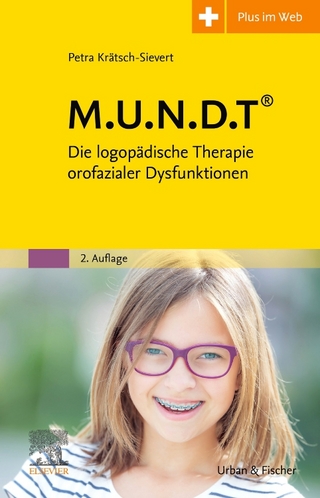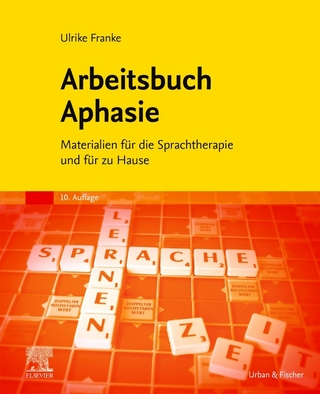
Introduction to Audiologic Rehabilitation
Pearson (Verlag)
978-0-13-258257-5 (ISBN)
- Titel erscheint in neuer Auflage
- Artikel merken
Ronald Schow is Professor Emeritus at Idaho State University (ISU) where he has taught since 1975. Although semi-retired he continues to teach in the Audiology program in the Division of Health Sciences. Dr. Schow received his Bachelor of Science in Biology from Utah State University and then earned a Ph.D. in Audiology from Northwestern University in 1974, with Raymond Carhart as his major professor. Before coming to ISU, he taught at Illinois State University (1972-75). Dr. Schow is the co-author of numerous books and journal articles including “Communication Disorders of the Aged” and the five previous editions of Introduction to Audiologic Rehabilitation. He has been awarded Fellow status in ASHA and in the International Collegium of Rehabilitative Audiology, where he was inducted as one of the original charter members. Michael Nerbonne is Professor Emeritus in the Department of Communication Disorders at Central Michigan University, where he taught from 1981-2011. Prior to that, he was a professor in the Department of Speech Pathology and Audiology at Idaho State University for eleven years. Dr. Nerbonne received his undergraduate degree from Michigan State University, where he also earned his M.A. and Ph.D. in Audiology. He has published widely during his career in audiologic rehabilitation and is a Fellow of ASHA.
Part One: Fundamentals of Audiologic Rehabilitation
1 Overview of Audiologic Rehabilitation Introduction
Hearing Loss Characteristics
Consequences of Hearing Loss: Primary and Secondary
Rehabilitative Alternatives
Procedures in Audiologic Rehabilitation: An AR Model–CORE and CARE
Settings for Audiologic Rehabilitation
Summary
Summary Points
2 Hearing Aids and Hearing Assistive Technologies
Introduction
Hearing Aid Components
Hearing Aid Styles
The Earmold
Who Is a Hearing Aid Candidate?
Hearing Aid Fitting Protocol
Pediatric Fittings
Special Fittings
Hearing Assistive Technology or when a Hearing Aid May Not Be Enough
Concluding Remarks
Summary Points
3 Cochlear Implants and Vestibular/Tinnitus Rehabilitation
Introduction
Cochlear Implants
Vestibular Evaluation and Rehabilitation
Tinnitus Evaluation and Rehabilitation
Summary Points
4 Auditory Stimulation in Communication
Introduction
A Communication Model
Auditory Perception
The Auditory Training Process
Current Approaches to Auditory Training
Summary Points
5 Visual Stimuli in Communication
Introduction
Factors Related to Speechreading
Speechreading and the Hearing Impaired
Manual Communication
Summary Points
Supplementary Learning Activities
Recommended Reading
References 197
Appendixes 201
6 Language and Speech of the Deaf and Hard of Hearing
Introduction 211
Communication Options for Families of Children with Hearing Loss
Hearing as the Foundation for Speech and Language
Factors Affecting Speech and Language Acquisition
Language Assessment
Speech Development in Children with Hearing Loss
Summary
Summary Points
7 Psychosocial Aspects of Hearing Loss and Counseling Basics
Introduction
Psychosocial Aspects of Hearing Loss
“Knowing Is Not Enough”: Counseling Basics
Does Counseling Make a Difference?
Summary
Summary Points
8 Audiologic Rehabilitation Services in the School Setting
Introduction
Why AR Services Are Required in School Settings: The Educational Consequences of Hearing Loss
AR Services Provided in Schools
AR Service Providers in School Settings
Services for Children with Auditory Processing Problems
“A Day in the Life” of an Educational audiologist
Summary Points
Part Two: Comprehensive Approaches to Audiologic Rehabilitation
9 Audiologic Rehabilitation for Children: Assessment and Management
Introduction
Prevalence of Loss and Level of Service
Terms and Definitions
Profile of the Client
Rehabilitation Settings and Providers
Identification and Assessment Procedures with Children
Aspects of Audiologic Rehabilitation: Early Intervention for Parent—Infant and Preschool
Aspects of Audiologic Rehabilitation: School Years
Summary
Summary Points
10 Audiologic Rehabilitation for Adults and Elderly Adults: Assessment and Management
Introduction
Profile of the Adult Client
Profile of the Elderly Client
Model for Rehabilitation
Rehabilitation Settings
Rehabilitation Assessment
Rehabilitation Management
Summary
Summary Points
Part Three: Implementing Audiologic Rehabilitation: Case Studies
11 Case Studies: Children
Introduction
Case 1 Joey: Family-Centered Intervention: Multiple Disabilities
Case 2 Annie: Routes to Spoken Language Following Cochlear
Implantation
Case 3 Amber: Issues Affecting Educational Placement
Case 4 Greg: Late Identification of a Hard of Hearing Child
Case 5 Sam: Differential Diagnosis through Professional
Teamwork: A Tool for Solving Complex Intervention Problems
12 Case Studies: Adults and Elderly Adults
Introduction
Case 1 Dr. M.: Progressive Hearing Loss
Case 2 Mr. B.: Hearing Loss, Depression, and Successful Hearing Aid Use
Case 3 J.D.: AR Featuring a Significant Other
Case 4 Mrs. R.: Cochlear Implant User
Case 5 Mrs. E.: Nursing Home Hearing Aid User
Case 6 Ashley: New Technology for an Experienced user
Summary Points
| Erscheint lt. Verlag | 3.9.2012 |
|---|---|
| Sprache | englisch |
| Maße | 100 x 100 mm |
| Gewicht | 100 g |
| Themenwelt | Medizin / Pharmazie ► Gesundheitsfachberufe ► Logopädie |
| Medizin / Pharmazie ► Medizinische Fachgebiete ► HNO-Heilkunde | |
| Medizin / Pharmazie ► Physiotherapie / Ergotherapie ► Rehabilitation | |
| ISBN-10 | 0-13-258257-0 / 0132582570 |
| ISBN-13 | 978-0-13-258257-5 / 9780132582575 |
| Zustand | Neuware |
| Haben Sie eine Frage zum Produkt? |
aus dem Bereich


